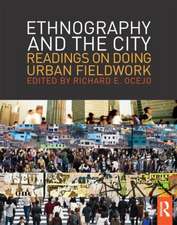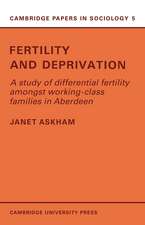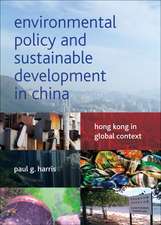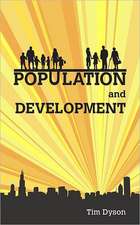New York's New Edge: Contemporary Art, the High Line, and Urban Megaprojects on the Far West Side: Emersion: Emergent Village resources for communities of faith
Autor David Halle, Elisabeth Tisoen Limba Engleză Paperback – 18 iul 2016
The story of New York’s west side no longer stars the Sharks and the Jets. Instead it’s a story of urban transformation, cultural shifts, and an expanding contemporary art scene. The Chelsea Gallery District has become New York’s most dominant neighborhood for contemporary art, and the streets of the west side are filled with gallery owners, art collectors, and tourists. Developments like the High Line, historical preservation projects like the Gansevoort Market, the Chelsea galleries, and plans for megaprojects like the Hudson Yards Development have redefined what is now being called the “Far West Side” of Manhattan.
David Halle and Elisabeth Tiso offer a deep analysis of the transforming district in New York’s New Edge, and the result is a new understanding of how we perceive and interpret culture and the city in New York’s gallery district. From individual interviews with gallery owners to the behind-the-scenes politics of preservation initiatives and megaprojects, the book provides an in-depth account of the developments, obstacles, successes, and failures of the area and the factors that have contributed to them.
David Halle and Elisabeth Tiso offer a deep analysis of the transforming district in New York’s New Edge, and the result is a new understanding of how we perceive and interpret culture and the city in New York’s gallery district. From individual interviews with gallery owners to the behind-the-scenes politics of preservation initiatives and megaprojects, the book provides an in-depth account of the developments, obstacles, successes, and failures of the area and the factors that have contributed to them.
Din seria Emersion: Emergent Village resources for communities of faith
-
 Preț: 144.99 lei
Preț: 144.99 lei - 9%
 Preț: 352.50 lei
Preț: 352.50 lei -
 Preț: 307.55 lei
Preț: 307.55 lei -
 Preț: 146.50 lei
Preț: 146.50 lei - 8%
 Preț: 360.28 lei
Preț: 360.28 lei -
 Preț: 185.37 lei
Preț: 185.37 lei -
 Preț: 183.89 lei
Preț: 183.89 lei -
 Preț: 115.53 lei
Preț: 115.53 lei - 6%
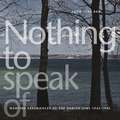 Preț: 324.95 lei
Preț: 324.95 lei - 8%
 Preț: 346.31 lei
Preț: 346.31 lei -
 Preț: 67.35 lei
Preț: 67.35 lei -
 Preț: 101.43 lei
Preț: 101.43 lei -
 Preț: 216.90 lei
Preț: 216.90 lei - 18%
 Preț: 2261.34 lei
Preț: 2261.34 lei -
 Preț: 215.52 lei
Preț: 215.52 lei -
 Preț: 167.85 lei
Preț: 167.85 lei -
 Preț: 179.04 lei
Preț: 179.04 lei - 12%
 Preț: 290.56 lei
Preț: 290.56 lei -
 Preț: 156.84 lei
Preț: 156.84 lei - 9%
 Preț: 353.24 lei
Preț: 353.24 lei -
 Preț: 186.09 lei
Preț: 186.09 lei -
 Preț: 176.49 lei
Preț: 176.49 lei -
 Preț: 133.99 lei
Preț: 133.99 lei -
 Preț: 144.80 lei
Preț: 144.80 lei - 18%
 Preț: 348.59 lei
Preț: 348.59 lei -
 Preț: 138.26 lei
Preț: 138.26 lei -
 Preț: 163.52 lei
Preț: 163.52 lei - 18%
 Preț: 502.35 lei
Preț: 502.35 lei -
 Preț: 182.98 lei
Preț: 182.98 lei -
 Preț: 208.55 lei
Preț: 208.55 lei -
 Preț: 279.55 lei
Preț: 279.55 lei - 8%
 Preț: 563.24 lei
Preț: 563.24 lei -
 Preț: 116.07 lei
Preț: 116.07 lei -
 Preț: 120.81 lei
Preț: 120.81 lei -
 Preț: 160.63 lei
Preț: 160.63 lei - 9%
 Preț: 352.77 lei
Preț: 352.77 lei -
 Preț: 106.35 lei
Preț: 106.35 lei -
 Preț: 273.93 lei
Preț: 273.93 lei -
 Preț: 316.40 lei
Preț: 316.40 lei -
 Preț: 548.71 lei
Preț: 548.71 lei -
 Preț: 138.81 lei
Preț: 138.81 lei -
 Preț: 152.25 lei
Preț: 152.25 lei -
 Preț: 229.92 lei
Preț: 229.92 lei -
 Preț: 94.22 lei
Preț: 94.22 lei -
 Preț: 203.53 lei
Preț: 203.53 lei -
 Preț: 145.41 lei
Preț: 145.41 lei - 8%
 Preț: 311.68 lei
Preț: 311.68 lei -
 Preț: 208.32 lei
Preț: 208.32 lei -
 Preț: 302.76 lei
Preț: 302.76 lei - 8%
 Preț: 565.01 lei
Preț: 565.01 lei
Preț: 229.86 lei
Nou
Puncte Express: 345
Preț estimativ în valută:
43.98€ • 47.93$ • 37.06£
43.98€ • 47.93$ • 37.06£
Carte tipărită la comandă
Livrare economică 23 aprilie-07 mai
Preluare comenzi: 021 569.72.76
Specificații
ISBN-13: 9780226379067
ISBN-10: 022637906X
Pagini: 471
Ilustrații: 62 halftones, 8 line drawings, 8 tables
Dimensiuni: 152 x 229 x 28 mm
Greutate: 0.63 kg
Editura: University of Chicago Press
Colecția University of Chicago Press
Seria Emersion: Emergent Village resources for communities of faith
ISBN-10: 022637906X
Pagini: 471
Ilustrații: 62 halftones, 8 line drawings, 8 tables
Dimensiuni: 152 x 229 x 28 mm
Greutate: 0.63 kg
Editura: University of Chicago Press
Colecția University of Chicago Press
Seria Emersion: Emergent Village resources for communities of faith
Notă biografică
David Halle is professor of sociology at the University of California, Los Angeles, and director of the summer travel program, UCLA in New York: Cities and Cultures. He is also an adjunct professor at the City University of New York's Graduate Center and School of Professional Studies and the author of America's Working Man and Inside Culture, also published by the University of Chicago Press. Elisabeth Tiso is an art historian who has taught at Parsons, Fordham University, and UCLA in New York. She has published reviews and articles on contemporary art and architecture in Art in America, ArtNews Magazine, Parole gelées, and other academic publications.
Cuprins
Acknowledgments
Introduction Developing New York’s Far West Side: Contemporary Art, the High Line, Megaprojects, and Urban Growth
Part I Contemporary Art
1 Chelsea as New York’s Dominant Contemporary Art Gallery Neighborhood: A Real Estate and Finance Story
2 Contemporary Art and Life
Part II “Preservation” Projects
3 The High Line
4 The Gansevoort Market: From Meat Smells and Prostitution to Historic District, Fashion Central, Google Headquarters, and Whitney Museum
Part III Megaprojects: Why They Often Don’t Happen or Take So Long If They Do, from Javits Expansion to Moynihan Station
5 The Javits Expansion Fiasco
6 The Debate over Urban Stadiums: The New York Sports and Convention Center Fight (2004–2005)
7 The Hudson Yards: Rezonings of 2004–2009 and Beyond: The City’s Uniform Land Use Review Process, Inclusionary Zoning for Affordable Housing, Tax Increment Financing and the Number 7 Subway Extension, and the Culture Shed
8 Penn/Moynihan Station, 1992–? Fixing Infrastructure
Part IV Challenges to Chelsea’s Art Gallery District from the Lower East Side
9 The Lower East Side and the New Museum: The Next Chelsea, or Another “Wrong Turn”?
10 Balancing Urban Growth and Protection/Preservation
Notes
Reference List
Index
Introduction Developing New York’s Far West Side: Contemporary Art, the High Line, Megaprojects, and Urban Growth
Part I Contemporary Art
1 Chelsea as New York’s Dominant Contemporary Art Gallery Neighborhood: A Real Estate and Finance Story
2 Contemporary Art and Life
Part II “Preservation” Projects
3 The High Line
4 The Gansevoort Market: From Meat Smells and Prostitution to Historic District, Fashion Central, Google Headquarters, and Whitney Museum
Part III Megaprojects: Why They Often Don’t Happen or Take So Long If They Do, from Javits Expansion to Moynihan Station
5 The Javits Expansion Fiasco
6 The Debate over Urban Stadiums: The New York Sports and Convention Center Fight (2004–2005)
7 The Hudson Yards: Rezonings of 2004–2009 and Beyond: The City’s Uniform Land Use Review Process, Inclusionary Zoning for Affordable Housing, Tax Increment Financing and the Number 7 Subway Extension, and the Culture Shed
8 Penn/Moynihan Station, 1992–? Fixing Infrastructure
Part IV Challenges to Chelsea’s Art Gallery District from the Lower East Side
9 The Lower East Side and the New Museum: The Next Chelsea, or Another “Wrong Turn”?
10 Balancing Urban Growth and Protection/Preservation
Notes
Reference List
Index
Recenzii
“New York’s New Edge offers a retrospective on three case studies in urban and cultural development begun under the administration of Mayor Michael R. Bloomberg with lessons for Mayor Bill de Blasio.”
"New York’s New Edge is an absolutely brilliant contribution to the sociology of art, urban sociology, and urbanism. This is one of the very best sociological texts that I have read in ages. I highly recommend it to all those who are interested in Manhattan’s Far West Side transformations."
“Focusing on the now-booming district of the Far West Side, sociologist David Halle and art historian Elisabeth Tiso offer a substantial and eminently sensible analysis of why development in Giuliani and Bloomberg-era Manhattan evolved as it did. Their compelling history of the present, resolutely opposed to sloganeering ‘tale-of-two-cities’ explanations, reveals through specifics the people and institutional structures involved with area galleries and built environment projects, and the circumstances that resulted in success or failure. All students of cities will learn much from this engrossing book.”
“In New York’s New Edge (the title may be understood literally as referring to the city’s far west side and metaphorically) David Halle and Elisabeth Tiso interweave three complex histories: the rise of Chelsea as the world’s premier gallery district; iconic preservation projects such as the High Line; and mega real estate projects such as Hudson Yards. Their reading of each is nuanced, cutting through many of the ‘accepted wisdoms’ of the day. Their purpose is to analyze what makes for a reasonable balance between healthy urban growth and preservation. This book is a must for planners, politicians, and anyone with an interest in the future of cities.”
“The link between the contemporary art scene in Chelsea and the development of an edge neighborhood of restaurants, hotels, and new housing is detailed and superbly analyzed by David Halle and Elisabeth Tiso. The preservation of the High Line and creation of the Gansevoort Market Historic District led to extraordinary change. In New York's New Edge the relation of cultural identity to people, planning, and politics is made personal and comprehensible by surprising anecdotes and insightful commentary.”
“This hefty tome will surely pique the interest of anyone who fancies art, the urban, or how the two come together in the City That Never Sleeps. . . . The authors have done a marvelous job of weaving together their respective specialties—sociology for Halle and art history for Tiso—to produce a text that gives ample consideration to the present as well as to the historical development of a particular slice of the Big Apple. This is a fantastic example of collaboration and interdisciplinarity, and the authors have clearly penned a thoroughly engaging text that ought to have broad appeal to scholars, activists, and avid readers. Highly recommended.”








